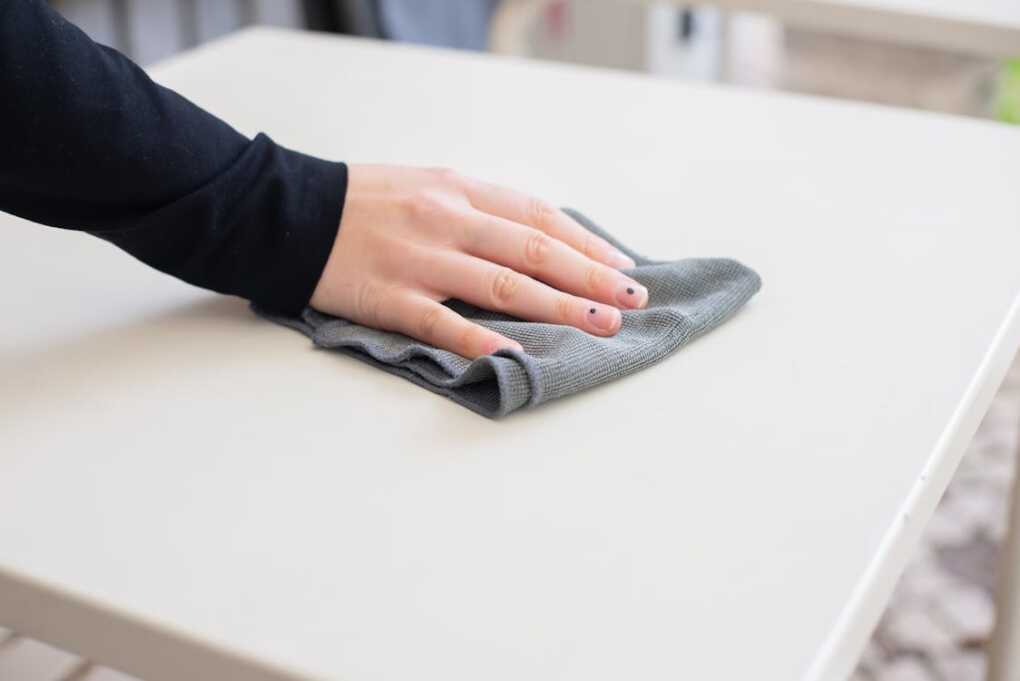Surface hygiene isn’t something you can overlook when keeping food-safe areas clean. Any kitchen surface that comes into direct contact with food, like cutting boards or utensils, should be cleaned and sanitized with wipes made specifically for that purpose.
However, not all food contact surface wipes are made the same. Choosing the wrong one could introduce harmful residues and bacteria or violate food safety regulations.
To choose the best food contact surface wipes, you need to prioritize food safety and sanitizing, and those specifically designed for surfaces where food is prepared. Every feature of a food contact surface wipe plays a crucial role in keeping your food environment safe.
This blog explores a step-by-step guide on choosing the best food contact surface wipes, including what to consider and what to steer clear of.

1. Limit Wipes to Those Approved for Food Contact
The first and most crucial step is ensuring the food contact surface wipes are labeled safe for food contact surfaces.
Start by looking for a label that says the company complied with food safety guidance from the FDA 21 CFR regulations. That typically means the product has been tested to verify that it does not leave behind anything harmful or toxic after use.
Wipes approved for food contact generally do not use fragrances, dyes, or strong surfactants. Instead, they rely on safe ingredients such as purified water or isopropyl alcohol. Some include a mild disinfectant, but nothing would be unsafe for food.
Generally, household or general-purpose wipes should not be used on any surface where food is prepared or consumed. Sometimes, they’re too abrasive and may leave behind invisible residues that could affect your food safety.
2. Know What the Wipe Is Made Of
The material of a wipe impacts everything from how well it can soak up to how likely it is to tear. Durability is as big a deal as safety when cleaning food contact surfaces.
Polyester-cellulose blend fabrics are common due to their combination of strength and absorption.
However, the best approach is to choose a surface wipe made from a material appropriate to your purposes. Opt for tougher wipes for heavy-duty cleaning, such as around kitchen surfaces. Softer versions are ideal for more delicate tools or tender surfaces.
Matching wipe material to your task ensures you won’t have a hole in a sheet of wipes halfway through cleaning — or worse, wipe remnants on prep surfaces.

3. Choose Between Dry and Pre-Wetted Wipes
Both dry and pre-saturated wipes have their strengths and weaknesses, and you should make your decision based on how you like to clean. Dry wipes offer flexibility that allows you to pair them with whatever food-safe solution you prefer.
They’re perfect if you already have a homemade or store-bought disinfectant or sanitizer at home. You get to determine precisely what gets placed on the surface.
Meanwhile, pre-wetted wipes are ready for action and come pre-filled with a cleaning solution. For instance, SatPax120 R wipes are pre-saturated with 70% isopropyl alcohol and water, and are a good option for quick, easy, and effective sanitation with no prep involved. Just pull one out and go.
However, keep in mind that pre-saturated wipes may dry out if the packaging is not sealed correctly. Dry wipes suffer no such problem, but they have one more step. If faster and more even results are your goal, go pre-wetted. Dry is better if you’d rather have complete control over the cleaning process.
4. Seek Out Labels That Indicate Testing and Safety Info
A wipe is only as safe as its safety profile. Opt for wipes with “no rinse required” on the label. That points to the fact that the formula has been engineered not to leave a dangerous residue, even if food touches it immediately afterward.
For extra peace of mind, choose wipes with third-party testing or certification information. If the packaging says the company complies with ISO standards or food safety programs like HACCP, that’s a strong indication the manufacturer follows strict quality protocols.
Labels emblazoned with phrases like “no VOCs” (volatile organic compounds), “no dyes,” and “no artificial surfactants” signal a wipe designed with food safety in mind. If a wipe requires rinsing, you shouldn’t use it on any surface that food touches.

5. Balance Price against Usage Frequency
While cost is always a consideration, don’t compare price per pack—look at the cost per use. Cheaper wipes that rip or need several sheets per job can cost more than better-quality options.
So, consider how frequently you clean. If you’re wiping down counters once a day, a small pack might be enough. But if you work in a commercial kitchen or food processing facility, buying in bulk can significantly reduce your per-use cost and ensure you’re always stocked when you need it most.
6. Think About the Environmental Impact
In today’s environmentally conscious world, thinking about what happens to your wipes after use is crucial. Most single-use wipes are made with synthetic materials that can take years to break down. If you care about sustainability, look for biodegradable or compostable options.
Wipes made with cellulose-based fibers break down more easily than polyester ones.
Better still, choose wipes that are 100% plant-based or certified compostable. They cost a little more but can significantly impact your environmental footprint.
Don’t forget the packaging, either. Look for recyclable containers or buy in bulk to reduce waste. And here’s a simple tip: rinse or soak up large spills before reaching for wipes. Little habits like that go a long way in conserving the environment.

Final Thoughts
When choosing the best food contact surface wipes, don’t just grab the first product off the shelf. Your choice should be guided by safety, material quality, ease of use, cost-effectiveness, and environmental impact.
Look for wipes clearly labeled for food contact use and made from reliable materials. Decide if dry wipes (paired with your cleaner) or ready-to-use pre-saturated wipes work better for your routine.
By carefully comparing your options, you’ll choose wipes that meet your specific needs, whether you maintain a home kitchen or manage strict standards in a food processing facility.
